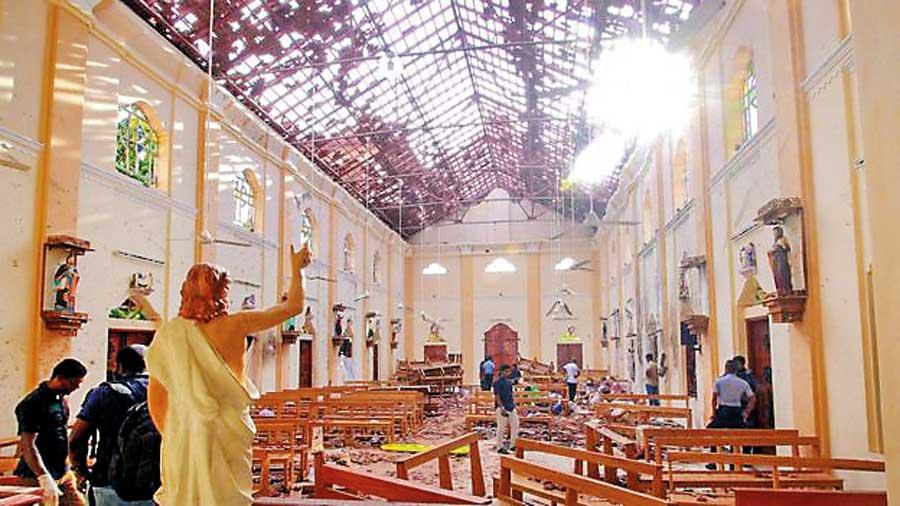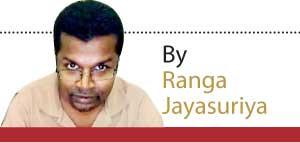Reply To:
Name - Reply Comment
The Government decision to unban five Wahhabist groups would turbocharge the Islamist radicalization – It will cost lives

They targeted Catholics in churches, and foreigners in upmarket hotels, as an extension of the global jihad
The Government has decided to lift the ban on five of 11 Islamic organizations that were proscribed after the Easter Sunday attacks on April 21, 2019, according to our sister newspaper Sunday Times.
newspaper Sunday Times.
Accordingly, the ban on the following Islamic organizations will be lifted ‘subject to strict conditions’: Jamiyathul Ansaari Sunnathul Mohomadiya (JASM), Sri Lanka Thawheed Jamma’ath (SLTJ), All Ceylon Thawheed Jamma’ath (ACTJ), Ceylon Thawheed Jamma’ath (CTJ) and United Thawheed Jamma’ath (UTJ), the paper reported.
Six other groups, including Islamic State (IS) and Al-Qaeda and four local groups, Dharul Adhar, Sri Lanka Islamic Student Movement (SLISM), Save the Pearls alias Save the Pearl Society and Super Muslim will remain banned.
The decision is said to be based on recommendations by an expert committee and intelligence agencies.
For the uninitiated, this may appear as a routine security review. One might even misconstrue this as a gesture aimed at reconciliation. This isn’t any of that. This is a dangerous decision that would turbocharge the Islamist radicalization in Sri Lanka. This would help the fringe foreign implants of Wahhabism and Salafism, the ideological drivers of global Salafi Jihad,claw back the permissive space they lost after the Easter Sunday attacks. The Easter Sunday carnage compelled the then government, though belatedly, to take measures to counter Islamist radicalization.Now, this decision would also provide a veneer of legitimacy for Wahhabist indoctrination in the country.
Wahhabists decried the localized religious practices as unIslamic, which resulted in runway battles between Wahhabists and local Muslim groups in the East and Aluthgama
Extremism: more than that meets the eye
The politically convenient, still nonsensical, explanation for this decision would be that these groups were not violent extremists or involved in the Easter Sunday attacks. But, in extremism, there is much more than that meets the eye - unless you choose to dig deeper. As the UN General Assembly noted,”violent extremism encompasses a wider category of manifestations” than terrorism since it includes forms of ideologically motivated violence that falls short of constituting terrorist acts.”
The battle against Islamist extremism is a battle against an ideology, a puritanical brand of Islam as manifested by Wahhabism and Salafism that demand stricter adherence to the literal interpretation of the Quran and Sunnah. This doctrinaire strain of Islam is the ideological fountain of global Salfi Jihad, spearheaded earlier by Al Qaeda and later Islamic State. (Zahran and the fellow Easter Sunday attackers did not kill for localized grievances. They targeted Catholics in churches, and foreigners in upmarket hotels, as an extension of the global jihad).
Extremism is a much-contested terminology; its interpretation is culturally and socially subjective. Perhaps the most commonsense interpretation of extremism is what the British Home Office describes it: “Extremism is defined as the vocal or active opposition to fundamental values, including democracy, the rule of law, individual liberty and the mutual respect and tolerance of different faiths and beliefs, as well as calls for the death of United Kingdom armed forces at home or abroad.”
The Easter Sunday carnage compelled the then government, though belatedly, to take measures to counter Islamist radicalization.Now, this decision would also provide a veneer of legitimacy for Wahhabist indoctrination in the country
The Pyramid
Consider extremism as a pyramid or an iceberg. Violent extremist attacks of the sort of Easter Sunday attack are what we see; they happen once in a while and manifest in high-profile violence. But, beneath them, there is a much larger body mass, an organizational structure of extremism, their guiding ideology and groups joined together by a certain shared ideological belonging. Violent extremists provide the most profound practical interpretation of that ideological yearning. But, their peers would dedicate themselves to below-the-threshold acts of extremism, which, in a purely legal sense, may not constitute a crime; still, they represent a gradualist approach to radicalization and institutional capture and moulding of the society to mirror their ideological ends.
That body mass is populated by extremism, below the threshold of propagators and apparatus. Both violent extremists and extremists generally share the same ideology. Most violent extremists were once members of non-violent extremist groups.
Suicide bombers may pop up once in a while and blow up. Still, the ideology goes on as long as the security agencies and anti-extremist/radicalization apparatus tackle this larger mass of non-violent extremism, its ideology and organizational apparatus.
Back to the pyramid of extremism, at the bottom of the pyramid is a much larger gradual societal change impacted by the propagation of the particular extremist ideology. You saw that in Sri Lanka leading up to the Easter Sunday attacks, in the Arabization of certain quarters of the Muslim society in Sri Lanka, the retreat of Muslim women into all-encompassing Burkas and mushrooming Wahhabist mosques.
The latest decision to unban purveyors of Wahhabism sends the wrong signal to the Muslim community that it was wrong by the Government to act against the gradual alienation of Muslim society from the rest
Mainstreaming Wahhabism
Zaharan, his National Thawheed Jamma’ath or his later outfit, Jamathei Millathu Ibraheem (JMI), played, at best, a peripheral role in Wahhabist indoctrination and Arabization of the Sri Lankan Muslim society. It was Wahhabi-oriented Muslim groups that spearheaded the process. They brought Wahhabism to the mainstream from the fringe it languished.
These groups, as their names themselves denote, subscribe to Wahhabism. They are better positioned to promote the ideology for their elevated role in Muslim society, their connection to Muslim politics and their deep pockets thanks to Petro-dollars from Gulf states.
With their deep pockets, Wahhabists captured influential Islamic associations, including All Ceylon Jamiyyathul Ulama (ACJU), the foremost religious body of Islamic theologians, converting these institutions to mirror the implanted foreign ideology. ACJU even issued a Fatwa mandating women to wear Burkas, the signature dress of Saudi religious puritanism.Wahhabists decried the localized religious practices as unIslamic, which resulted in runway battles between Wahhabists and local Muslim groups in the East and Aluthgama.
The Wahhabist encroachment of Muslim society was so successful that by the time of the Easter Sunday attacks, Wahhabism had already displaced moderate traditional Sri Lanka Islam from its dominant position. That was most pronounced in the Muslim majority enclaves in the East and Puttalam.
Anti-Semitism of Wahhabism crept into local textbooks. Islamic textbooks provided by the Government recommended killing those who converted from Islam. Extremist mosques and Madrasas of dubious quality mushroomed during the period. For instance, the Department of Islamic Affairs approved 190 new Wahhabi mosques in 2015, 50 in 2016, and 80 in 2017. That is, in addition to many hundreds of unregistered ones. Local satellite TV operators continued to broadcast on Peace TV, the controversial Islamic preacher Zakir Naik, even after Muslim majority Bangladesh banned it after the Holey Artisan bakery attack in 2016 for peddling peace and extremism. It was only after the Easter Sunday attacks that the Telecommunication regulators banned it.
The Wahhabist encroachment of Muslim society was so successful that by the time of the Easter Sunday attacks, Wahhabism had already displaced moderate traditional Sri Lanka Islam from its dominant position
Easter Sunday attacks and resultant public outrage kicked the Government out of complacency and effectively ended the free run hitherto given to Wahhabism.
President Gotabaya Rajapaksa’s decision to ban 11 Islamist groups on the recommendation of the Presidential Commission of Inquiry into the Easter Sunday attack was underpinned by their role in Wahhabist indoctrination in the country. (However, Gotabaya also refused to take action against Bodu Bala Sena, banning of which was also recommended by the commission).
Now, the Government’s decision to unban Islamist groups, who were the torchbearers of Wahhabism in the country, would bring Wahhabism back to the fore.
The immediate casualty would be the traditional Sri Lankan Muslims themselves.
It creates a permissive environment for Wahhabist expansion, making Muslim youth more vulnerable to radicalization. Religious extremists and others would rush to exploit this new permissive space. Wahhabism’s inroads resulted in the self-alienation of certain quarters of Muslim societies. Their women retreated into Burkas, and the kids went to Madrasas. Parallel societies were in the making. The government oversight after the Easter Sunday attack meant the slide was stalled. The latest decision to unban purveyors of Wahhabism sends the wrong signal to the Muslim community that it was wrong by the Government to act against the gradual alienation of Muslim society from the rest.That is a very dangerous message, just like this decision is.
Follow @Ranga Jayasuriya on Twitter